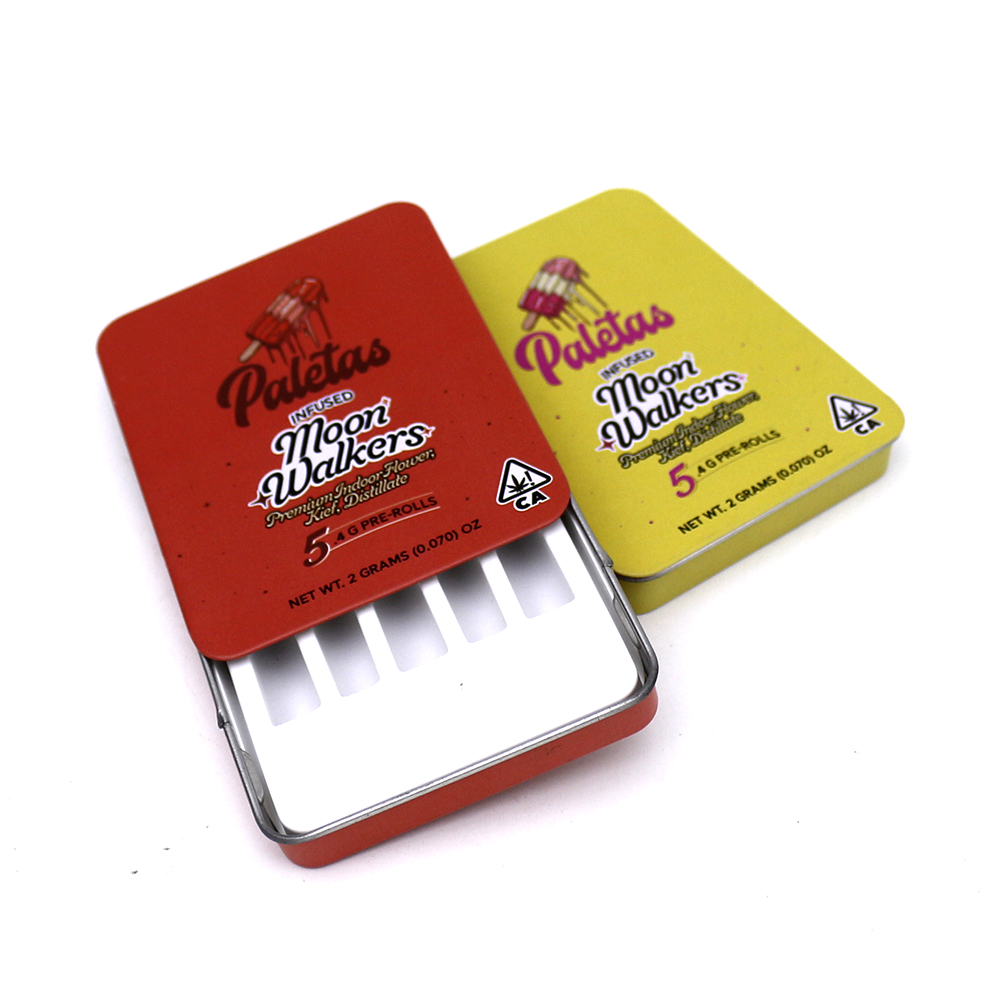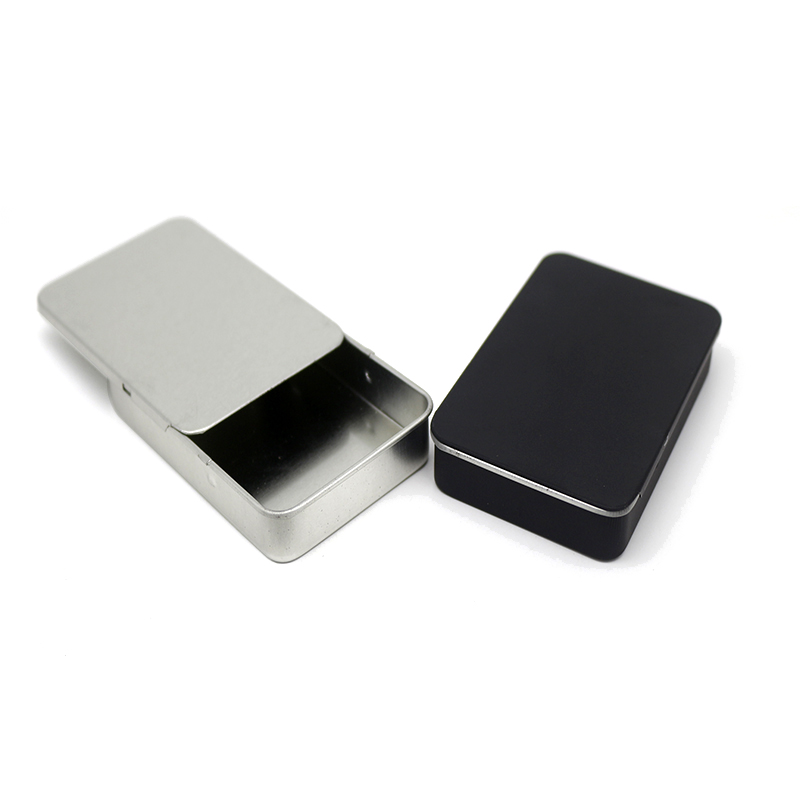Introduction: The Growing Need for Child Resistant Tins

We live in a world full of potentially dangerous substances – from medications to household cleaners, these everyday items can pose a significant risk to children if ingested or mishandled.
That’s where child resistant tins come into play. These ingenious containers provide a safe and effective way to keep curious little hands out of harm’s way. In this article, we’ll dive into the world of child resistant tins, exploring their benefits, designs, and uses.
The Benefits of Child Resistant Tins
Child resistant tins offer a myriad of advantages for households and industries alike:
Safety First
The primary purpose of these tins is to prevent children from accessing potentially harmful substances, reducing the risk of poisoning or other accidents.
Peace of Mind
Parents and caregivers can rest easy knowing that these containers are designed to thwart even the most determined little explorers.
Industry Compliance
Many industries are required by law to use child resistant packaging for certain products, helping businesses stay compliant with regulations.
Market Appeal
Child resistant tins also offer a competitive edge in the marketplace. By showcasing your commitment to safety, you can build trust with your target audience and boost your brand’s reputation.
Types of Child Resistant Tins
Push-and-Turn Tins



One of the most common types of child resistant tins, push-and-turn tins require users to push down on the lid while simultaneously turning it. This two-step process can be difficult for young children to perform, effectively keeping the contents secure.
Push-button tin






Push-button tin boxes have a special locking mechanism that requires the user to apply pressure at specific points to release the button to open the box. This design makes it difficult for children to access the contents, while adults and older people can still open them easily.
Slide Tins






Slide tins use a combination of simultaneous press and push-pull action on both sides to open the container. The user must press down on both sides of the box where the latches are located underneath and then pull the lid off to access the contents. This unique design creates an additional barrier for young children making it difficult for them to open the tins.
Still Not Finding What You’re Looking For?
Contact Our Consultants For More Available Child Resistant Tins.
Common Uses for Child Resistant Tins

Pharmaceuticals
Medications, both prescription and over-the-counter, can pose a serious risk to children if accidentally ingested. Child resistant tins are widely used in the pharmaceutical industry to securely store medications and keep them out of reach of children. If your medication is not that dangerous, using a regular medication box is fine.
Cannabis Products
With the growing legalization and popularity of cannabis products, it’s essential that these items are packaged safely. Child resistant tins are an effective solution for storing cannabis products, such as edibles, concentrates, and pre-rolled joints.


Cleaning Supplies
Many household cleaners contain harsh chemicals that can be dangerous if ingested.
Tobacco Products
Tobacco products, including e-cigarettes and smokeless tobacco, can be harmful to children if accidentally consumed. Child resistant tins provide a secure packaging solution to keep these products safely contained.


Cosmetics
Most cosmetics simply need to be packaged in regular cosmetic boxes. Some cosmetic products contain ingredients that could be harmful to children if swallowed or applied improperly.
Regulatory Requirements About Child-Proof Containers
Child-proof containers, such as child resistant tins, are subject to various regulatory requirements depending on the country and the type of products they are designed to hold. These regulations help ensure that these containers provide a reasonable degree of protection against the accidental ingestion of harmful substances by children. Below, we will discuss some of the key regulatory requirements in the United States and the European Union.
United States
In the United States, the primary regulation concerning child-proof containers is the Poison Prevention Packaging Act (PPPA) of 1970, enforced by the Consumer Product Safety Commission (CPSC). The PPPA requires that certain household substances be packaged in child-resistant packaging. Some of the products that must comply with the PPPA include:
- Prescription and over-the-counter medications
- Household chemicals and pesticides
- Products containing certain amounts of aspirin, acetaminophen, or other hazardous substances
Child-resistant packaging must meet specific performance standards set by the CPSC, which involve testing the packaging with children and adults to ensure that it is difficult for young children to open but accessible to most adults. Manufacturers and suppliers of child-proof containers must adhere to these standards and may be subject to regular testing and inspection to ensure ongoing compliance.
European Union
In the European Union, the regulations for child-resistant packaging are governed by the European Standard EN ISO 8317:2015, which applies to reclosable packaging for pharmaceutical and other potentially harmful products. This standard sets out the requirements for packaging that is difficult for children under the age of 52 months to open but easily accessible for adults.
Manufacturers of child-proof containers in the EU must adhere to the testing protocols outlined in the standard, which involve testing with both children and adults to determine the effectiveness of the packaging. Additionally, products containing hazardous substances must comply with the Classification, Labelling and Packaging (CLP) Regulation (EC) No 1272/2008, which requires child-resistant packaging for specific substances based on their hazard classification.
How to Choose the Right Child Resistant Tin
When selecting a child resistant tin for your product, consider the following factors:
Intended Use
First and foremost, determine the purpose of the tin. Are you looking to store medications, cosmetics, household chemicals, or tobacco products? Different products may require different types and sizes of tins to ensure optimal safety and storage conditions.
Size
Choose a tin size that accommodates the product you intend to store without wasting space. Refer to the common sizes and specifications provided later, or consult the manufacturer to determine the best size for your needs.
Design
Child resistant tins come in various designs with different locking mechanisms, such as push and turn lids, squeeze and turn lids, or sliding lids. Consider the age and abilities of the children in your household, as well as the ease of use for adults, when selecting the most suitable design.
Regulatory Compliance
Ensure that the child resistant tins you choose meet the regulatory requirements and standards applicable in your region, such as the Poison Prevention Packaging Act (PPPA) in the United States or the European Standard EN ISO 8317:2015 in the European Union.
Manufacturer Reputation

Select a reputable manufacturer with a proven track record in producing high-quality child resistant tins. Check customer reviews, industry certifications, and any available test results to gauge the quality and reliability of the manufacturer.
Brand Aesthetics
Select a tin that aligns with your brand’s visual identity, considering factors like color, design, and logo placement.
Budget
Finally, consider your budget and compare prices among various manufacturers and suppliers to find child resistant tins that meet your requirements without breaking the bank.
Customization Options
Many manufacturers offer customization options for child resistant tins to cater to specific branding or design preferences. Some of these options include:
Materials
Usually made from tin-plated steel, metal child resistant tins provide strength, durability, and a premium feel. They are also recyclable, contributing to a more eco-friendly packaging solution.
Size
Below is a table outlining some of the most common sizes for child resistant tins. These sizes are often used for various applications, such as storing medications, cosmetics, and household products. Keep in mind that these sizes may vary by manufacturer and specific design.
| Size | Dimensions (Diameter x Height) | Common Uses |
|---|---|---|
| Small | 1.5″ x 0.75″ (38mm x 19mm) | Pills, mints, small cosmetic items |
| Medium | 2.5″ x 1″ (63mm x 25mm) | Medications, balms, tobacco products |
| Large | 3.5″ x 1.5″ (89mm x 38mm) | Vitamins, supplements, candy |
| Extra Large | 4″ x 2″ (102mm x 51mm) | Cleaning supplies, larger cosmetics |
It’s important to note that this table provides a general overview of typical child resistant tin sizes. For your specific needs, it’s always best to consult with the manufacturer or supplier to ensure you’re selecting the most appropriate size and usage.
Color
Tins can be produced in various colors to match a brand’s identity or to create an appealing visual presentation.
Printing

Logos, text, or images can be printed directly onto the surface of the tin, providing a professional and polished look. This will also boost your branding.
If you want to know more about the topic of tin boxes customisation, check out this page Custom Tins: The Ultimate Guide.
Maintenance and Care of Child Resistant Tins
Proper care and maintenance of child resistant tins can ensure their longevity and continued effectiveness. Here are some tips:
Cleaning
Regularly clean the tins, especially after spills or leaks, to maintain their appearance and functionality. Use a gentle detergent and soft cloth to avoid scratching the surface or damaging the locking mechanism.
Storage
Store the tins in a cool, dry place away from direct sunlight or extreme temperatures to prevent warping or deterioration of the materials.
Inspection
Periodically inspect the tins for signs of wear or damage, such as dents, cracks, or issues with the locking mechanism. Replace any damaged tins to ensure their continued effectiveness in protecting children from harmful substances.
If you wait until the tin boxes are rusty and then try to restore them, it will be a huge job.
FAQs About Child Resistant Tins
Q: Are child resistant tins 100% childproof?
A: While these containers are designed to make it difficult for children to open, no packaging is completely childproof. It’s important to always keep potentially harmful substances out of children’s reach.
Q: Are child resistant tins reusable?
A: Many child resistant tins are made from recyclable materials, such as metal or plastic. When selecting a tin, consider the environmental impact and choose a packaging solution that aligns with your sustainability goals.
Q:Can child resistant tins be customized with my brand’s logo and design?
A:Yes, many manufacturers offer customization options for child resistant tins, including color, design, and logo placement.
Q:Do I need to use child resistant packaging for all products?
A:Child resistant packaging is typically required for specific products that pose a risk to children, such as medications, cannabis products, household chemicals, and tobacco products. Check your local regulations to determine if your product requires child resistant packaging.
Final Thoughts
Child resistant tins play a crucial role in keeping potentially harmful products out of the hands of young children. By understanding the benefits, common uses, and types of child resistant tins, you can make an informed decision when selecting the right packaging solution for your product.






